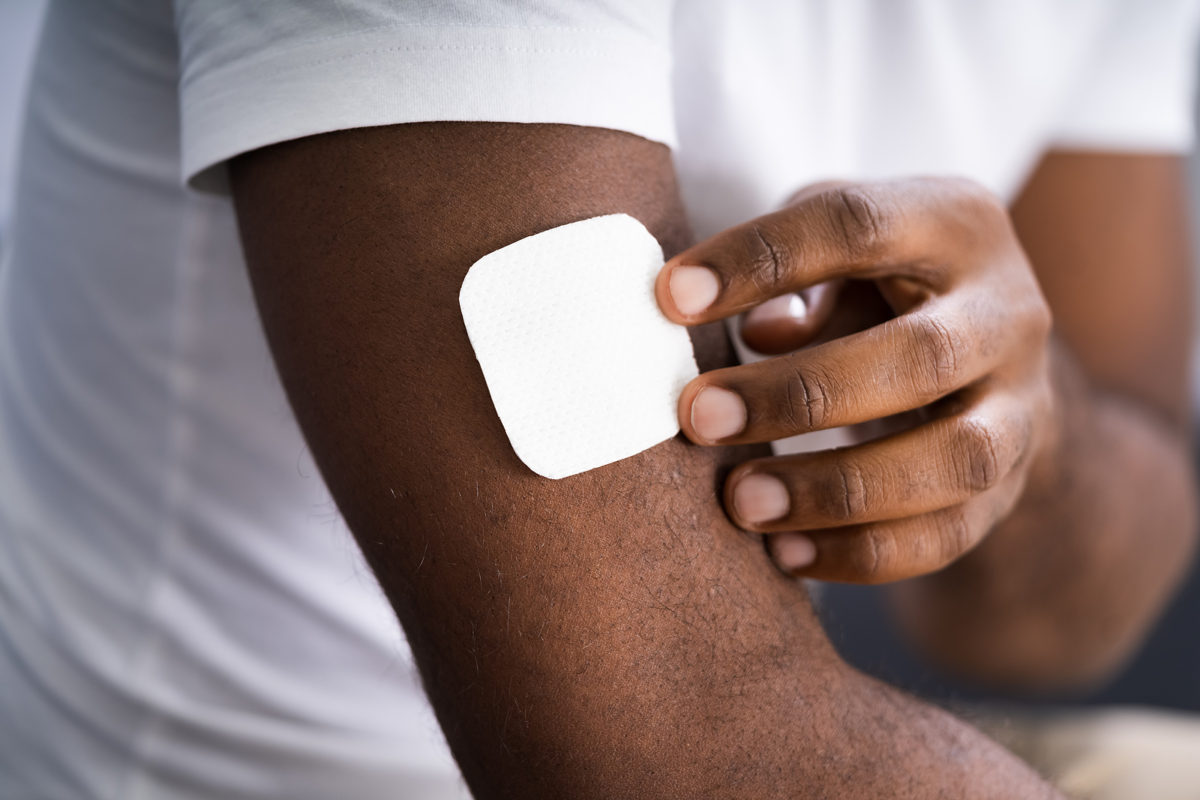Transdermal patches allow controlled delivery of medication that is either immediate, administered gradually, or both. There are several reasons why this method of administration may be preferred to an oral form of a drug or a topical cream or gel. Transdermal patches are commercially available in prescription and OTC forms and can also be custom made by a compounding pharmacy.
What Drugs are Made in a Patch?
Many drugs that can be used transdermally can be made in the form of a patch. The most common use for a transdermal patch is in management of acute and chronic pain. However patches are also commonly used for smoking cessation, contraception, cardiac disorders, and managing motion sickness.
The CDC guidelines for treating chronic pain without opioids recommend the use of topical medications when appropriate. Alternative first-line treatments that are recommended include: “lidocaine for neuropathic pain, topical capsaicin for musculoskeletal and neuropathic pain, and topical nonsteroidal anti-inflammatory drugs (NSAIDs) for localized osteoarthritis.” Lidocaine, capsaicin, and NSAIDS are all drugs that can be made in the form of transdermal patches.
Compounding pharmacies now also make a variety of pain medications in the form of transdermal patches that may not be commercially available otherwise.
History of Transdermal Patch Drug Delivery
Transdermal patches have been in use since at least 1979, when the first commercially available transdermal patch in the U.S. was brought to market for scopolamine. The scopolamine patch was developed as a small patch used behind the ear that delivered the drug over the course of 3 days to prevent motion sickness. It was effective at administering a drug that had a short half life when administered orally and it had few side effects. The next available transdermal patch that was commercially available, which became available in 1981, was the nitroglycerin patch for treating and preventing angina pectoris. This patch required a 12 hour rest period in between applications because nitroglycerin inactivates itself on prolonged delivery.
Further developments included commercially available patches with clonidine, estradiol, testosterone, opioids, and more. Today, the nicotine patch is the most commonly used transdermal patch in the U.S. New drugs continued to be developed in patch form with new technologies for manufacturing the patches that improve drug delivery.
Benefits of Transdermal Patch Delivery
There are numerous benefits to using a transdermal patch to administer drugs. These include:
- Uniform dosage with each patch.
- Avoid first-pass metabolism and gastrointestinal irritation
- Simple and painless method
- Drug administration can be terminated by removing patch
- Improved patient compliance due to ease of use
The side effects of a transdermal patch can vary depending on the drug being used. The side effects from the actual patch may involve some mild irritation.
Components of a Transdermal Patch
All transdermal patches have at minimum a drug reservoir, a backing laminate, and a release liner. Some patches also contain a rate controlling membrane to deliver the medication over a specific time period. There are a few different types of transdermal patches for drug delivery:
Single-layer drug-in-adhesive – The adhesive that holds the patch layers together is also what contains the drug.
Multi-layer drug-in-adhesive – Similar to the single-layer drug-in-adhesive, but contains a separate layer so there can be different controlled dosages of a drug. One layer may be immediate release while another layer is for a more prolonged release.
Reservoir – Has a separate drug layer from the adhesive. The reservoir contains the drug solution or suspension which is separated by the layer of adhesive.
Matrix – Includes a semisolid matrix with the drug solution while the adhesive layer surrounds and overlays it partially.
In addition to these systems there are also micro-needle patch delivery systems. These have small needles that allow greater penetration of the drugs into the dermis. The drugs are then able to directly enter dermal capillaries allowing for more rapid onset of action.
Applying a Transdermal Patch
Transdermal patches are most often applied to the upper outer arm, the upper chest, the lower abdomen, or the hip. You should always follow the instructions given to you by your doctor and pharmacist. Patches should not be applied to an area where there is an open wound or a place with lots of hair. Your doctor may suggest that you rotate placement locations between uses to minimize irritation.
Compounding Transdermal Patches for Pain
The most common reason for transdermal patches to be compounded is to manage chronic pain. It is estimated that almost 1 out of 5 people in the U.S. suffer from chronic pain making it one of the most common healthcare conditions. Not every pain medication is available in an FDA approved form. A compounding pharmacy can make many pain medications that are only available commercially in oral or topical creams into a patch form.
Articles
OTC Transdermal Analgesic Patches Can Relieve Pain – Pharmacy Times
Transdermal patches: Design and current approaches to painless drug delivery – Acta Pharmaceutica (via Sciendo)

